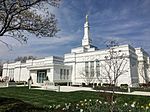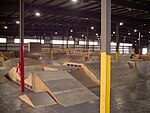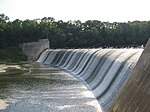Hartley Mound

The Hartley Mound is a Native American burial mound in Columbus, Ohio. The mound was created around 2,000 years ago by the Pre-Columbian Native American Adena culture. The site was added to the National Register of Historic Places in 1974. The mound measures 2 ft. high and 43 ft. in diameter. The site's location near a tributary to a major waterway, artifacts found nearby, and the small subconical form of the mound, suggests that it was built by the Adena culture (c. 500 B.C. – 400 A.D.). It is one of few mounds not seriously disturbed by agriculture, industry, or illegal excavation. Upon archaeological excavation, the site should provide information on Adena burial customs and domestic or mortuary structures.Resources about the site, including its National Register of Historic Places nomination, are restricted under the Archaeological Resources Protection Act of 1979.
Excerpt from the Wikipedia article Hartley Mound (License: CC BY-SA 3.0, Authors, Images).Hartley Mound
Edellmarr Lane, Columbus
Geographical coordinates (GPS) Address Nearby Places Show on map
Geographical coordinates (GPS)
| Latitude | Longitude |
|---|---|
| N 39.981959 ° | E -83.102363 ° |
Address
Edellmarr Lane 3765
43204 Columbus
Ohio, United States
Open on Google Maps








